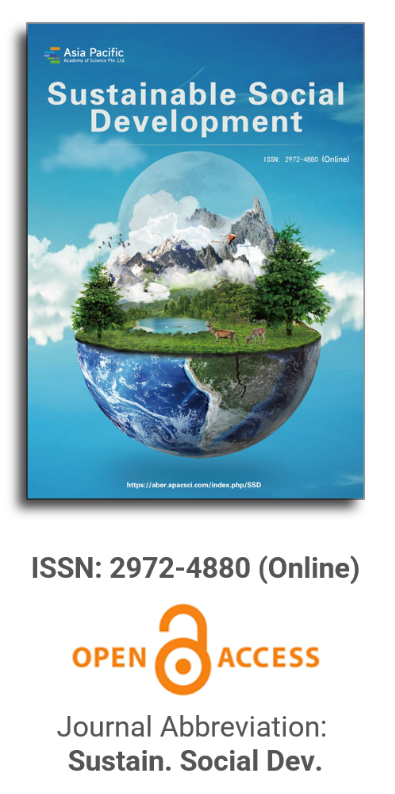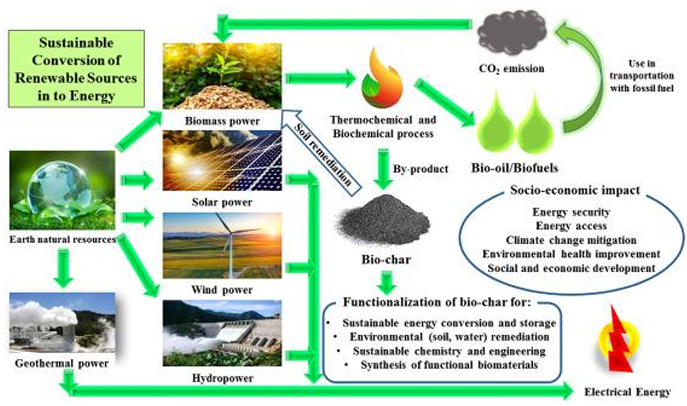
Asia Pacific Academy of Science Pte. Ltd. (APACSCI) specializes in international journal publishing. APACSCI adopts the open access publishing model and provides an important communication bridge for academic groups whose interest fields include engineering, technology, medicine, computer, mathematics, agriculture and forestry, and environment.

Mobilizing local government towards sustainable development: Challenges, initiatives, and support strategies
Vol 2, Issue 6, 2024
Download PDF
Abstract
This article explores the innovative sustainable development plan designed for the Municipality Unit (MU) of Vytina, a rural community in Greece. The study focuses on the experience and lessons learned over four years through educational and planning activities led by the Sustainable Development Association. The article highlights challenges, particularly the lack of direct municipal and government support, and emphasizes the necessity of financial, educational, and regulatory mechanisms to improve the effectiveness of bottom-up planning. The methodology combined qualitative and quantitative approaches, including surveys, focus groups, and participatory planning sessions. Findings reveal the importance of empowering residents to shape their sustainability goals while addressing barriers such as limited resources, resistance to change, and institutional gaps. The study proposes measures to streamline planning and align local efforts with broader frameworks like the 2030 Agenda for Sustainable Development. This research contributes to sustainable development discourse by providing a replicable model for rural communities, balancing local realities with global objectives. It highlights the pivotal role of municipalities and governments in fostering effective and inclusive sustainability initiatives.
Keywords
References
- Ayers JM, Huq S. Supporting adaptation to climate change: What role for official development assistance? Development Policy Review. 2009; 27(6): 675–692. doi: 10.1111/j.1467-7679.2009.00465.x
- Organization for Economic Co-operation and Development (OECD). Sustainable development strategies: A resource book. Organization for Economic Co-operation and Development; 2020.
- United Nations. Transforming our world: The 2030 agenda for sustainable development. United Nations; 2015.
- World Bank. World Development Report 2019: The changing nature of work. World Bank; 2019.
- Lee T, Rydin Y. Local responses to climate change: Opportunities and barriers for community engagement in the planning process. Local Environment. 2020; 25(3): 267–280. doi: 10.1080/13549839.2019.1707344
- European Commission. The European Green Deal. Publications Office of the European Union; 2019.
- Arnstein SR. A ladder of citizen participation. Journal of the American Institute of Planners. 1969; 35(4): 216–224. doi: 10.1080/01944366908977225
- Chambers R. Participatory workshops: A sourcebook of 21 sets of ideas and activities. Earthscan Publications. 2002.
- Reed MS, Fraser EDG, Dougill AJ. An adaptive learning process for developing and applying sustainability indicators with local communities. Ecological Economics. 2018; 68(11): 2233–2247. doi: 10.1016/j.ecolecon.2009.02.020
- Frey BS, Stutzer A. Happiness and economics: How the economy and institutions affect well-being. Princeton University Press; 2012.
- Smith G. Democratic innovations: Designing institutions for citizen participation. Cambridge University Press; 2018.
- Leach M, Scoones I, Stirling A. Dynamic sustainabilities: Technology, environment, social justice. Earthscan Publications; 2013.
- United Nations. Voluntary National Reviews at the HLPF 2022. United Nations; 2022.
- Hallsmith G, Christian D, Everett M. The EarthCAT Guide to Community Development: Action Planning for Sustainable Communities. EarthCAT; 2006.
- Gustafsson, M.-T., & Krantz, V. (2020). “Global adaptation governance: Explaining the governance responses of international organizations to new issue linkages.” Environmental Science & Policy, 114, 204-215.
- Pereira LM, Hichert T, Hamann M. Using futures methods to create transformative spaces: Visions of a good Anthropocene in southern Africa. Ecology and Society. 2019; 24(4): 1–23. doi: 10.5751/ES-11066-240419
- Meadows DH. Thinking in systems: A primer. Chelsea Green Publishing; 2008.
- Senge PM. The fifth discipline: The art and practice of the learning organization. Currency; 2006.
- Magee L, Scerri A, James P. Measuring social sustainability: A community-centered approach. Applied Research in Quality of Life. 2013; 8(4): 439–457. doi: 10.1007/s11482-012-9191-5
- Kapsalis T. An integrated methodology for sustainable planning in local communities. Journal of Sustainability. 2020; 12(8): 3300. doi: 10.3390/su12083300
- Mohan G, Stokke K. Participatory development and empowerment: The dangers of localism. Third World Quarterly. 2000; 21(2): 247–268. doi: 10.1080/01436590050004346
- Turner JFC. Learning by doing: Designing and planning with communities. Housing and Society. 2007; 34(3): 55–72.
- Healey P. Collaborative planning: Shaping places in fragmented societies. Springer; 1997.
- Government of Greece. Voluntary National Review of Greece for the 2030 Agenda on Sustainable Development. Government of Greece; 2022.
- Krantz L, Gustafsson P. Adaptive governance in local sustainable development. Sustainability. 2020; 12(2): 678. doi: 10.3390/su12020678
Supporting Agencies
Copyright (c) 2024 Takis Ap. Kapsalis
License URL: https://creativecommons.org/licenses/by/4.0/

This site is licensed under a Creative Commons Attribution 4.0 International License (CC BY 4.0).

Prof. Kittisak Jermsittiparsert
University of City Island, Cyprus





It is with deep regret that we announce the cancellation of the Forum on Sustainable Social Development & Computing and Artificial Intelligence, originally scheduled for June 15, 2025.

